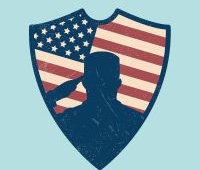Blog
‘Medical Gaslighting’ of women and people of color, including for mTBI
A New York Times article discusses "Medical Gaslighting”, a term used to describe situations where patients are frustrated after “dismissive experiences with medical professionals.” The author notes a 2020 study finding that women receive less medical care following traumatic brain injury (TBI).
Undergraduate medical students in North America are not receiving adequate concussion education, study finds
The scoping review concluded that undergraduate medical students in North America are not receiving adequate concussion education.
Pre- and post-concussion anxiety both contribute to risk of more intense and persistent symptoms
A study. found connections between pre-injury anxiety, post-injury anxiety, and persistent post-concussion symptoms. Dr. William Barr (NYU Langone Health) notably tweeted about the study, commenting: “assessment of anxiety is important among adolescents presenting for concussion care and delivery of evidence-supported treatments for anxiety are important considerations …”
Risk-seeking and impulsivity may shorten patients’ time to return to play, increasing risk
A study found associations between certain personality traits and the time until return to play after a concussion. Experience seeking and impulsivity are personality traits that indicate a shorter return to play after a concussion. In contrast, conscientiousness is a personality trait that investigators associated with a more extended return to play delay.
Increase in intimate partner violence during pandemic is leading to more brain injuries
UN Women has released information about the growing IPV against women during the pandemic; they report an increase in calls for IPV by 25-40% in many countries, and “an additional 15 million women would be affected by IPV for every three months of lockdown.”
Navy researcher designs shock-absorbing helmet
U.S. Navy researcher David Jesse Daily has created a prototype helmet with “increased protective capability.” As reported by TechLink, this helmet uses cavitating bubbles, which are “the formation of vapor pockets in a fluid,” to act as a shock absorber.
This new helmet design transfers the energy created on impact into the cavitation bubbles to help cushion the brain.
































